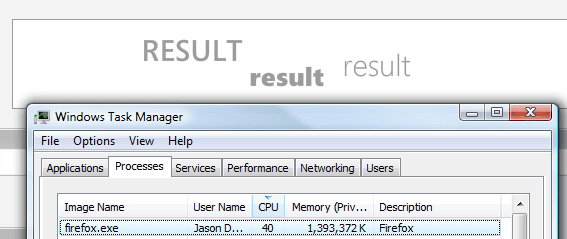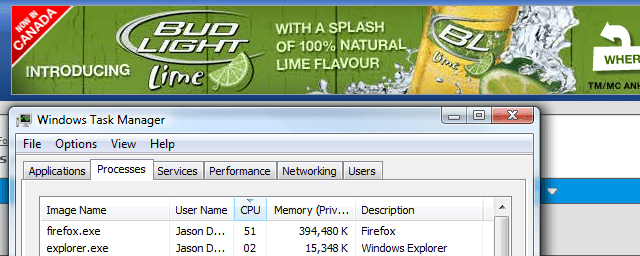Watchmen comes out on DVD today, so to celebrate the release of this amazing movie, I thought I’d embed this very hilarious spoof video that someone created. If you haven’t seen Watchmen yet, don’t worry, it’s nothing like this cartoon. 😉
Misty Coastline

Taken in Hilo, Hawaii, November 2006.
Some Thoughts on Facebook and Twitter
I’m a member of a group called Mobius – it’s an invite-only conference that Microsoft holds once or twice a year, and it focuses on mobility. There’s a private mailing list for Mobius, and it’s always full of interesting discussions. Yesterday there was a discussion about Google Wave and it spilled over into talking about Facebook and Twitter. One of the people mentioned the idea that as long as people use social networking in a professional manner, they’re good things. That triggered something I’ve been pondering for a while now, so I thought I’d share here what I wrote on the list.
“Ah, but there’s the catch! There’s no consensus on how tools like Facebook and Twitter are used – it’s like email, how do you decide the “right” way to use it?
You mention professional purposes, but I’m of the exact opposite viewpoint. Facebook for me was great in the beginning because my friends on there were really my friends. Then Facebook got really popular, and suddenly business aquiantences wanted to be added as “friends”, PR people I deal with wanted to be added as “friends”, and visitors from my sites wanted to be my “friends”. It completely changed the dynamic, and even the meaning of the word “friend” in an online sense. Sites like LinkedIn are social networking for businessses, yet most people seem to prefer to use Facebook for that because it has such momentum.
Then there’s the whole issue of person vs. site. It’s not my place to tell peole how to use technology, but when people on my “friend” list started to import their RSS feeds from their technology sites, I un-friend them. Maybe I’m weird, but if I’m friends with someone on Facebook, or following them on Twitter, I want to see what’s going on with them as a PERSON. If I wanted to know what’s going on with their Web sites, I’d open up my RSS reader. Mixing the two just makes a bit of a mess…
Twitter is a whole different ballgame – but it has the same type of problem when you want to follow a person and instead get a news feed from their site. I created Twitter accounts for each of my sites that I feed an RSS feed to, then I have my own personal Twitter account. Twitter for me is really useful and interesting – I was initially very much against it, having seen a lot of what I’d call “Tweetbuse” (haha!) where people would tweet everything they were doing. “Eating dinner”. “Going to the bathroom” (I kid you not, I saw that once). Thankfully, you can easily unfollow people like that.
One thing I really like about Twitter is how I get connected to opinions from people all over the place – I posted about trying to watch the movie “Day Watch” and only getting through 25 minutes of it, and within a few hours I had four strangers sending me messages telling me that the books were much better, and I should check them out. That’s really valuable to me – and I get a lot of interesting feedback about technology as well.”
OutsourcingRoom.com Stole Customer Data From Elance?
One of the reasons I use unique email aliases for my jasondunn.com email is that it enables me to control and track who’s using my email address, who’s sharing it, etc. Once I start getting spam to a certain alias, I block it. It’s not a perfect system; there are still people who take my “real” personal email address and share it with online services (greeting cards, etc.) and people who have virus/spyware problems on their PCs, so I still get spammed now and then. But I get perhaps 3-5 per day, so it’s easy to manage.
I was surprised then when I received an email from a site called “Oroom” and it was addresses to my unique Elance email address. Here’s what I sent to Elance:
“I use unique email aliases, and for Elance the email address on file is *******. Imagine my surprise when I received an unsolicited email message from Oroom, promoting a new service/site. I didn’t give Elance permission to share or sell my email address to any other companies. Please explain how this happened.”
And here is their response:
“Dear Jason,
Thanks for contacting us. In the last day or so, we’ve learned that OutsourcingRoom.com and its parent company CyberBionic Systematics has illegally obtained and posted information about Elance members and sent out unwanted solicitation emails. We have confirmed that no financial information such as credit cards, tax id numbers, or other financial records were compromised. The stolen data was limited to name, city, state, phone number, and email address.
Elance treats the security and privacy of our community members with the utmost seriousness. We have already mobilized an international team to investigate and respond to this issue and have demanded legally that they cease and desist. We have taken immediate steps to remedy the cause of the security breach, and have secured all areas that were discovered to be vulnerable. We are also in contact with the parent company and are pursuing all avenues available to us to have the data removed and destroyed.
Elance has made demands on OutsourcingRoom.com and its overseas hosting services. We have filed an international criminal complaint. And we are contacting the law enforcement officials in the relevant countries presently.
We continue to take this issue very seriously and will update you when we have more relevant details to share. We extend our sincere apologies for any inconvenience or disruption that this has caused anyone. If you have a specific question, please contact Elance by email at *******, and we will attempt to answer with whatever information we have.
Best regards,
Steve
Manager, Customer Relations
Elance”
Seems that the outsourcing industry is quite competitive if one company is willing to risk getting caught hacking into another company’s customer database.
My Swoopo Experiment: Yes, This is Gambling
Yesterday morning I was questioning the legitimacy of Swoopo, and after reading up on it some more, my curiosity was so strong I decided to invest a bit of money to see if their system actually worked. So here’s how it played out:
- I bought a “bidpack” for $27 CAD + tax ($27.30) which gave me 40 bids (that’s 68 cents per bid)
- I picked a product that I wanted (a 32 GB USB Flash drive), and one that I figured there wouldn’t be a great deal of competition on (such as a laptop)
- I waited until the last 10 seconds to place my first bid (the price was at 8 cents), and when a bid is placed it adds a few seconds onto the countdown clock
- I spent about four minutes bidding against a handful of other people, and eventually won – the final price being $9.84 CAD
- I used up 18 bids on this item, which cost me $12.24 CAD – more than the item itself
- Shipping on this item is $5.90 CAD
- So my total cost on this item is $27.98 CAD – almost three times the cost of the final bid price
- The retail cost of this item if Iwere to purchase it from my favourite computer store (Memory Express) would be $89.24 CAD including tax (not counting the rebate – those are always a bit dodgy)
- So in the end I’m saving $61.26 CAD on this product. Not bad, right?
…but everyone else who bid on this item threw their money away, and that’s the true “evil genius” in Swoopo. Let’s say there were five other people bidding (and there were at least that many), and that each person bidding dumped, on average, of 10 bids into the process. If they had the same basic cost as I did, each of them spent $6.80 bidding on this and in the end they walked away with nothing. Swoopo in the meantime, made $68.80. Assuming they got a good deal on the purchase of the 32 GB Flash drive, they would have made a bit of money on this transaction.
The real action though is on the hot items like Macbooks, where there are thousands of bids – this article has a great breakdown of the process, but the short version is that on hot items like this, Swoopo is making $13,000+ on a laptop that they paid perhaps $1300 for. You have hundreds, if not thousands of people, throwing money at the process and walking away with nothing.
That’s the real catch with Swoopo – it’s basically gambling, with a group of people throwing money into a pool and only one of them can walk away the winner. You have to go “all in” and be prepared to out-bid, and out-last everyone else in order to win the item. If you don’t committ enough money, you “fold” and give up. One person wins, and everyone else loses. It’s like eBay designed by Satan.
Nikola Tesla: The Most Important Person You’ve Probably Never Heard Of
“The life story and work of Nikola Tesla. He invented AC electricity, Neon Lights, Radio transmission, The Electric motor, Wireless electricity transfer, Remote control, Hydraulics, Lasers, Space weapons, Robotics, and many, many more things.”
Today would have been Nikola Tesla’s birthday, and Google has put a spotlight on the work of this very brilliant, but very perculiar man. I read a book about Tesla recently, and while the book was quite awful (here’s my review of it), Tesla remains an interesting figure in history. The 10 minute video above is a good summary of his life, and it certainly shows the dark side of Thomas Edison.
All Your Browser Crashes Are Belong to Flash!
Over the past year or so, I’ve been plagued with browser crashes of a specific type: Flash banners. There’s a certain type of Flash animation that gives IE8, Chrome, and Firefox absolute fits. Complete lock-up and eventual crash. Check out the screen shots:

Above: This is a Windows Live Flash-based banner locking up and crashing Google Chrome. Google seems to resist crashing the best of all the browsers, though when it tanks it takes the whole thing down – not just a single tab like they’d have you believe. I guess nothing works as well as the marketing tells us it does.

Above: Here’s Firefox crashing on a Microsoft Bing Flash-based banner locking up and crashing Firefox. The behaviour is always the same: Firefox will peg one CPU core, and the memory usage will climb and climb – once it reaches around 1.5 GB, it will finally crash hard. I’ve lost count of the number of crash reports I’ve submitted to Mozilla.

Above: Another Firefox Flash banner crash, this time from Bud Light. Maybe Firefox doesn’t like lime beer.

Above: Yet another Firefox crash, this time on another computer, and from Budweiser.
Curious about what the actual crash report looks like when Firefox takes a dump? Dig this:
Description:
A problem caused this program to stop interacting with Windows.
Problem signature:
Problem Event Name: AppHangB1
Application Name: firefox.exe
Application Version: 1.9.0.3399
Application Timestamp: 49f1091d
Hang Signature: cc8e
Hang Type: 0
OS Version: 6.0.6002.2.2.0.256.1
Locale ID: 1033
Additional Hang Signature 1: 2de4e2a1ef83764b153393c7ddb0c147
Additional Hang Signature 2: 75d7
Additional Hang Signature 3: fdf5d60b2d0319bb6c73afe447f9eeff
Additional Hang Signature 4: cc8e
Additional Hang Signature 5: 2de4e2a1ef83764b153393c7ddb0c147
Additional Hang Signature 6: 75d7
Additional Hang Signature 7: fdf5d60b2d0319bb6c73afe447f9eeff
This has happened to me on multiple computers, multiple browsers, and no, it’s not related to extensions on Firefox. The only extensions I’ve had installed for quite a while now is the Canadian dictionary, and Xmarks. But since it crashes both Chrome and IE8, neither of which have add-on extensions, I’m more suspicious of Flash itself – meaning that this problem is related to the Flash plug-in that each of these browsers use. I’ve updated, un-installed, and re-installed Flash more times than I can count and it never helped. I’ve watched as a banner goes through certain animations, and the CPU is pegged, then it transitions to another part of the banner and the CPU calms down. This is all related to the animation that Flash banner designers are using, I’m sure of it.
Because IE8 doesn’t re-open tabs when you close and re-open it – didn’t IE7 do that? – using it for my serious browsing isn’t much of an option. I fire it up when I need to check a site that I know I won’t keep open for more than a few minutes. Chrome is more crash-proof than Firefox 3.1, so I’ve been using that for the past month or so. It’s a nice, fast browser – but doesn’t render everything properly and sometimes acts funky, so I fire up Firefox on a regular basis. It’s weird using three different browsers! I haven’t tried Firefox 3.5 much since it was released recently, so I might switch back and hope that it’s less prone to “Flash Crashes”…
Jackson 5: ABC
Michael Jackson, regardless of what he had become in the latter years of his life, was a talented performer – this medley of several Jackson 5 songs shows just how talented he was, even at a young age.
Three New Amazon.com Features I’d Like To See
I really like shopping from Amazon.ca in Canada – and I’d shop even more from them if they had more products. They’re getting better in Canada, adding some electronics, but by and large Amazon.ca is a pale reflection of Amazon.com. At any rate here are two ideas I wish Amazon would implement:
- Discount Alert: There are some books and movies that I want, but I’m not willing to pay the current price for them. Case in point: The Shield Season 7 is $49.99 right now. I recently purchased seasons two through five for $29.99, which is a great price. I was holding off on buying seasons six and seven until they dropped in price. I was checking on Amazon.ca for something else a few days ago, and decided to look up The Shield again – and wouldn’t you know, season six dropped in price by $20 and was $29.99. Why doesn’t Amazon have a way for me to flag a particular product, then notify me when that product is on sale? If a product I want to pay less for goes on sale for a few days, but I’m not told about it, Amazon is losing out on a sale. Further, if Amazon had 5000 people who flagged an item and were waiting for it to go on sale, they could go back to the manufacturer of that product and say “Hey, we have 5000 people who will probably buy this product if we can get the price down – what can you do for us?” That’s a powerful market waiting to happen.
- Softcover Alert: There are numerous books that I’m interested in reading, but not so much that I want to pay extra for the hardcover edition. The extra size and weight of hardcover books means I’ll only buy them if it’s a book that I’m really excited about reading (typically something by Terry Brooks). It’s easy to forget the name of a book you want to read, so I’d like to see Amazon.com allow customers to flag a hardcover book and be alerted when it’s available in softcover. This would be an easy way for Amazon to rack up some extra sales. Or they could go even further and allow the pre-order of the softcover book, months before it comes out. This would be much better than what I do now, which is add the book to my wish list with a note saying that I’m waiting for the softcover version. People don’t seem to read the notes, so I end up with a hardcover version…
- Series Alerts: More often than not, I’ll buy the first book in a series, read it, and forget about the next books in the series until many months later when they finally come out. It’s not that I don’t want to read the next book in the series, it’s that there’s no easy way for me to be notified about the new book in the series. If Amazon.com allowed me to flag a series and get alerted when a new book is released, or even pre-order the next book, it would simply show up at my door when it comes out. Again, easy sales for Amazon.com and a lot of convinience for me as a customer.
Object Collection: American Coins
I figured the 4th of July was a good day to publish my collection of American coin objects that I’ve scanned over the past week. All the coins are provided in transparent PNG format. Coins are tricky to scan – the edges on some of these coins aren’t perfect, but they should look good when dropped into a layout. I started these scans at 600dpi but had shifted up to 900dpi at the end where I scanned the $1 coin – I’ll be using 900dpi from now on for small object scanning. Enjoy!
US $1 dollar coin front
[Download high-res version, transparent PNG]
